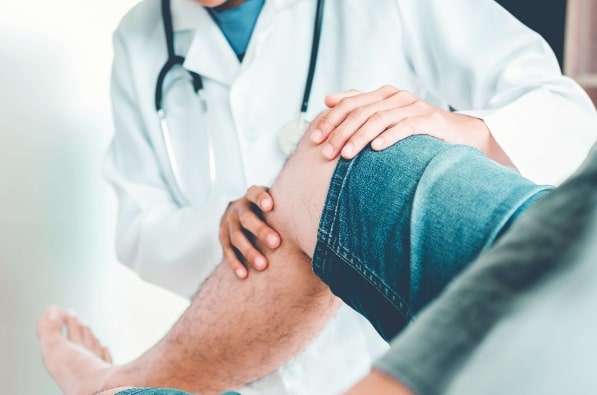The treatment for osteoarthritis (OA) aims to relieve pain, improve joint function, and enhance the overall quality of life. While there is no cure for OA, various treatment options can help manage symptoms and slow down the progression of the disease.
Here are common approaches to treating osteoarthritis:
Medications:
Over-the-counter medications such as acetaminophen (Tylenol) can help relieve mild to moderate pain associated with OA. Nonsteroidal anti-inflammatory drugs (NSAIDs) like ibuprofen (Advil, Motrin) or naproxen (Aleve) may be used for more severe pain and inflammation.
Creams, gels, or patches containing NSAIDs or capsaicin (a substance found in chili peppers) can be applied directly to the skin over the affected joint to alleviate pain and inflammation.
Physical therapy:
Physical therapists can design personalized exercise programs to improve joint flexibility, strength, and mobility. Range-of-motion exercises, strengthening exercises, and low-impact aerobic activities such as walking or swimming are often recommended. Therapeutic modalities such as heat or cold therapy, ultrasound, or electrical stimulation may also be used to reduce pain and stiffness.
Lifestyle modifications:
Maintaining a healthy weight or losing excess weight can help reduce stress on weight-bearing joints such as the knees and hips, thereby relieving pain and slowing down joint degeneration.
Avoiding activities that exacerbate joint pain and using assistive devices such as braces, splints, or canes can help protect and support affected joints.
Injections:
Injections of corticosteroids directly into the affected joint can provide temporary relief from pain and inflammation, particularly for individuals with moderate to severe OA.
Also known as viscosupplementation, these injections may help lubricate and cushion the joint, reducing pain and improving mobility in some people with knee OA.
Surgery:


In cases of severe OA where conservative treatments are ineffective and joint damage is extensive, joint replacement surgery (e.g., knee or hip replacement) may be recommended to relieve pain and restore function.
This minimally invasive procedure may be performed to remove damaged tissue or bone fragments, smooth rough joint surfaces, or repair torn cartilage in the joint.
Acupuncture, tai chi, yoga, and massage therapy are complementary approaches that some individuals with OA find helpful in managing pain and improving joint function. While evidence for their effectiveness varies, many people report symptom relief and improved well-being with these therapies.
